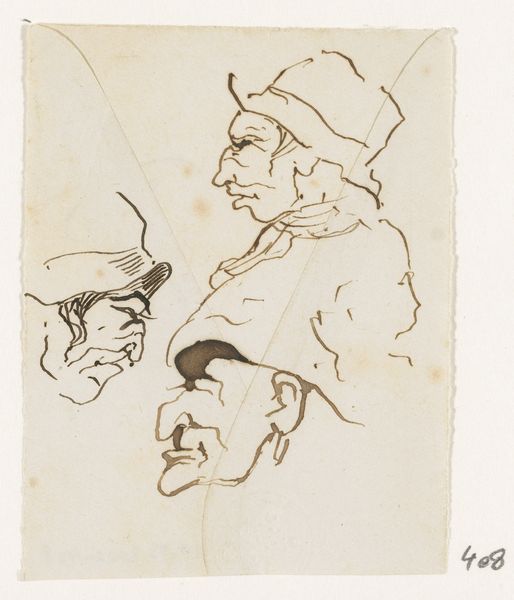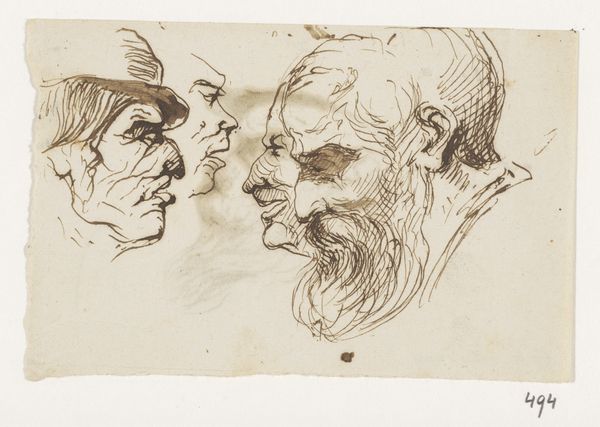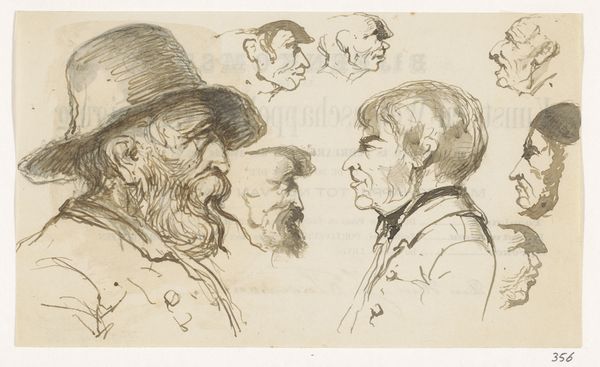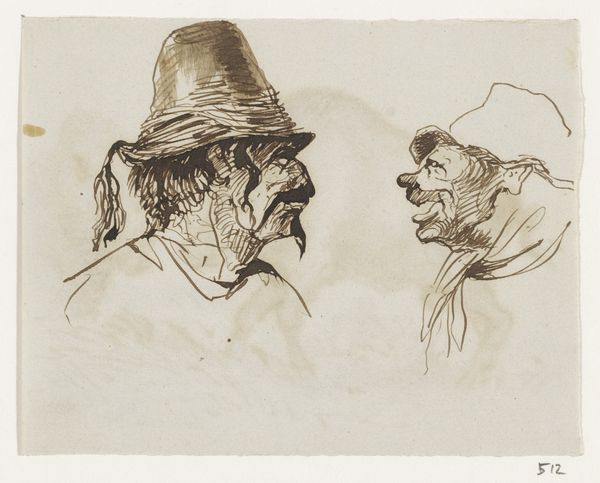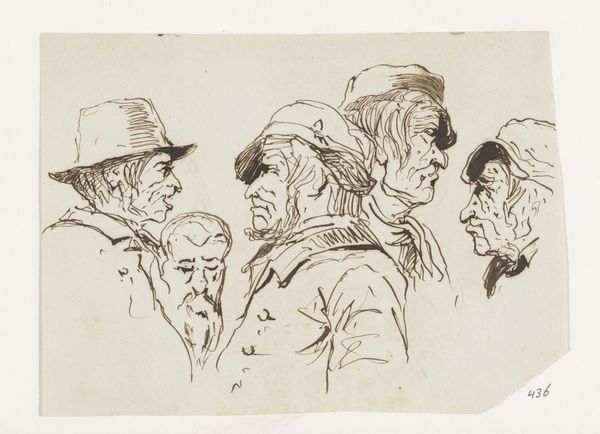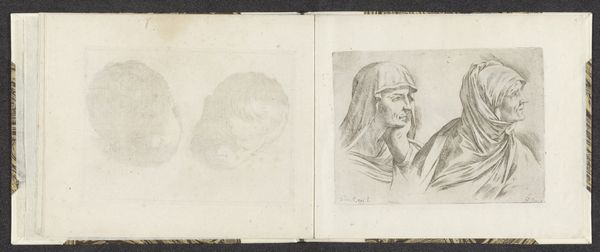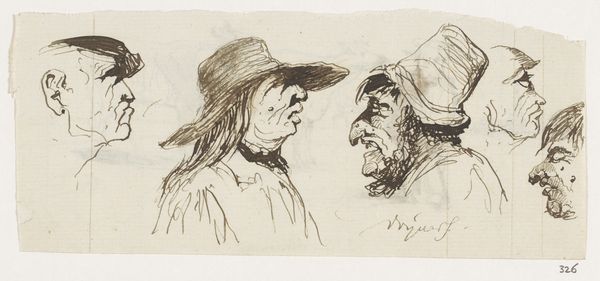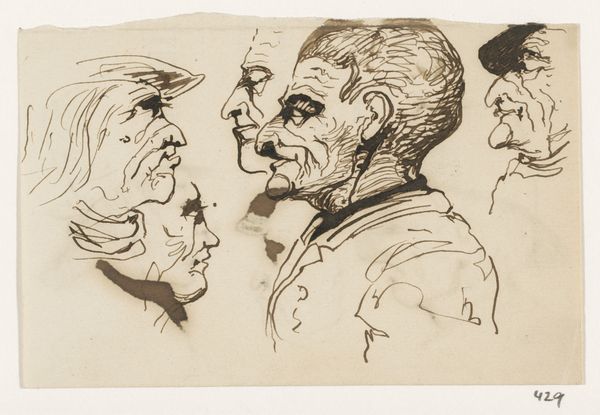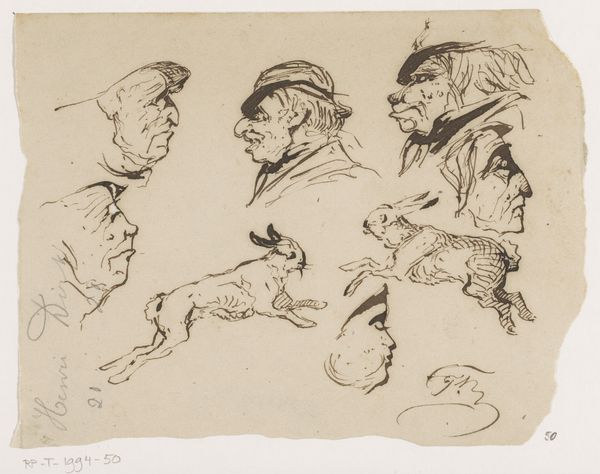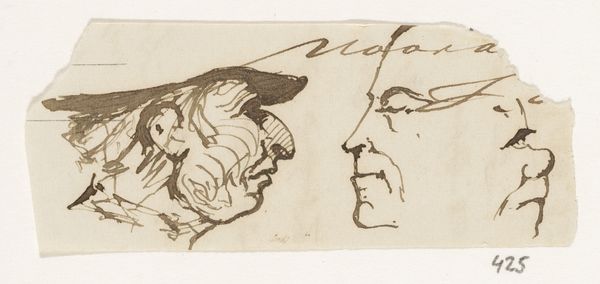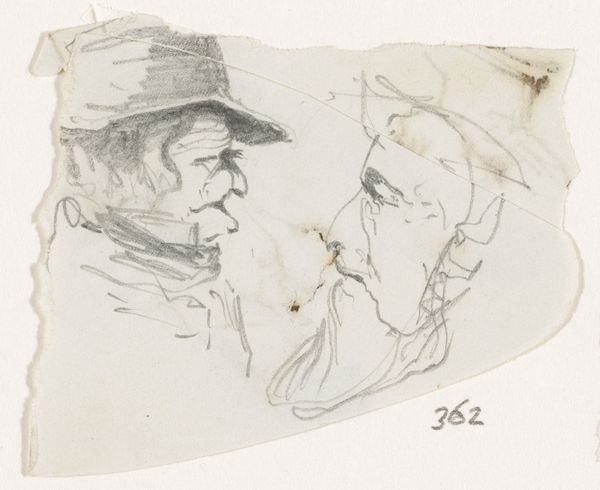
drawing, ink
#
portrait
#
drawing
#
imaginative character sketch
#
quirky sketch
#
cartoon sketch
#
personal sketchbook
#
ink
#
character sketch
#
ink drawing experimentation
#
sketchbook drawing
#
genre-painting
#
storyboard and sketchbook work
#
sketchbook art
#
fantasy sketch
#
realism
Dimensions: height 66 mm, width 101 mm
Copyright: Rijks Museum: Open Domain
Curator: Let's take a look at "Drie koppen" – that's "Three Heads" – a drawing rendered in ink, made sometime between 1840 and 1880 by Johannes Tavenraat. It's held here at the Rijksmuseum. What's grabbing you first? Editor: It's the roughness, definitely. These aren't polished portraits; they feel more like quick studies. The ink seems almost spontaneously applied, all scratchy lines and blotchy shading, probably straight from the pen of someone documenting life and experiences on paper. Curator: Exactly, they're not formal commissions. We see this kind of genre painting influencing social commentary throughout the 19th century. It democratized representation; you didn’t need to be wealthy to have your likeness explored. Editor: And it’s not just about social class, but how art depicts different kinds of labor, different social functions within communities. What were these figures doing? How would people have known or inferred the roles that people play in their societies by just glancing at how artists portray them? Curator: I see this less as documentary and more of an engagement with the Romantic idea of character. Artists were delving into physiognomy and other pseudo-sciences attempting to link appearance with inner character. Editor: I don’t know, though – maybe both things could be valid points, given how broadly artists made records of observations, in sketchbooks and the like? I feel that Johannes probably recorded different models that showed a range of expressions and temperaments? Also, the raw material is interesting, seeing the economical use of ink, suggesting artistic experimentation happening almost off the cuff. Curator: That idea fits. Remember the rise of Realism. Courbet would demand, "Show me an angel, and I'll paint one." These aren’t angels, but regular folk, sketched directly from observation. And it made for a visual art tied closely to social shifts. Editor: And think about it this way: it challenges these conventional methods. We appreciate their rawness for not being polished, allowing the materiality of the sketch and labor to become visible within its execution. These characters start existing both inside and outside the formal portraits tradition simultaneously. Curator: Fascinating how an artist working in the mid-19th century could embrace new models but in some ways participate in really deep shifts happening within artmaking, too. Editor: Right. It gets us to look past who is shown, at just how they are rendered and created, and forces a conversation with labor involved during its crafting and final interpretations.
Comments
No comments
Be the first to comment and join the conversation on the ultimate creative platform.
